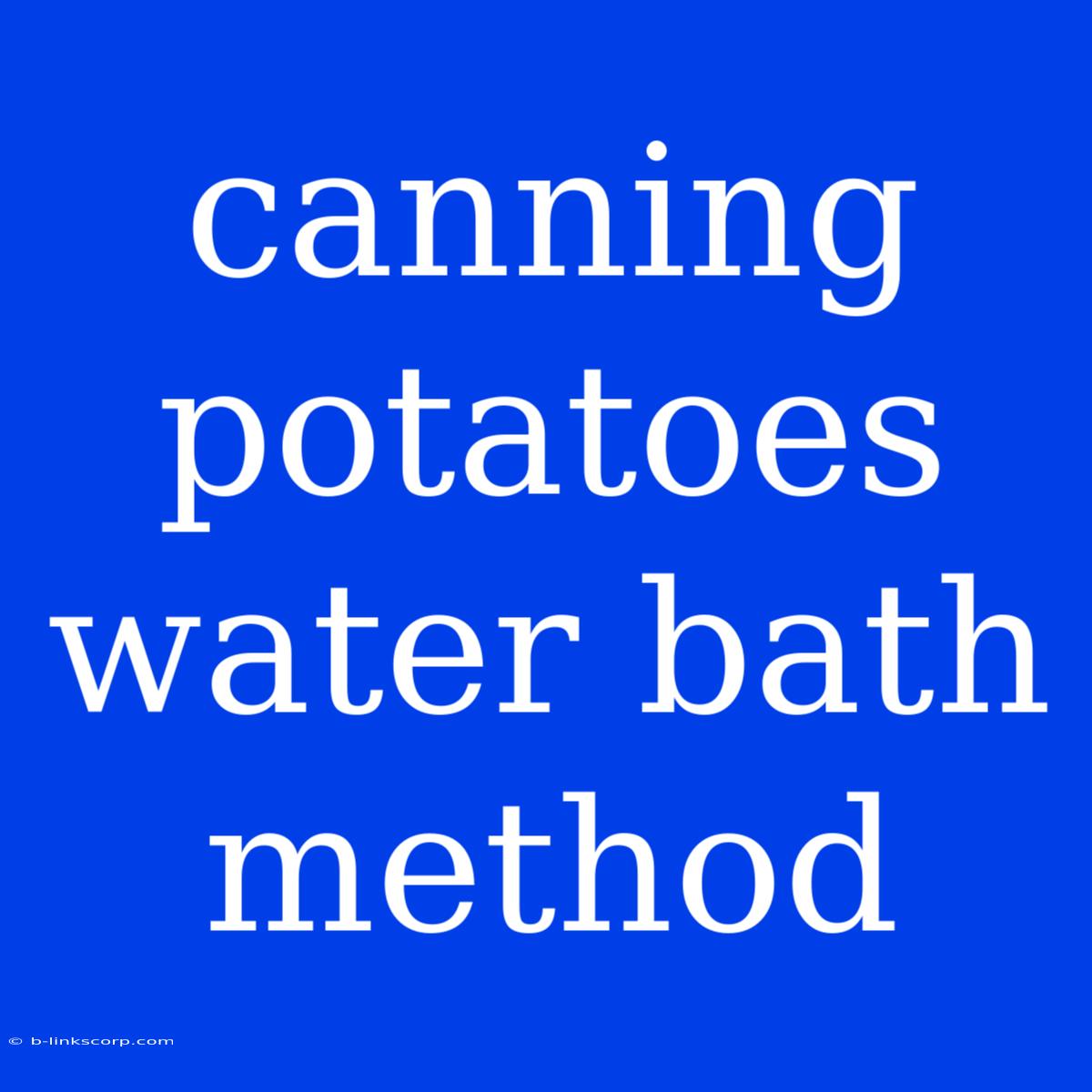Caning Potatoes: A Simple Guide to the Water Bath Method
Love potatoes? Want to enjoy their deliciousness all year round? Canning potatoes using the water bath method is a great way to preserve your harvest and have a pantry full of tasty spuds ready to use in any recipe.
What is the water bath method?
The water bath method is a safe and effective way to can low-acid foods like potatoes. It involves immersing sealed jars in boiling water for a specific time, creating enough heat to kill any harmful bacteria and ensure safe storage.
Choosing Your Potatoes
Not all potatoes are created equal! Choose firm, blemish-free potatoes that are free from any signs of rot or damage. Here are some popular varieties for canning:
- Red potatoes: Their creamy texture and delicate flavor make them great for salads and other dishes.
- Yukon Gold potatoes: Their golden color and buttery flavor are perfect for mashed potatoes, soups, and casseroles.
- Russet potatoes: Known for their high starch content, they're ideal for baking and roasting.
Preparing Your Potatoes
- Wash and scrub the potatoes thoroughly.
- Cut the potatoes into the desired size. For smaller potatoes, you can cut them into quarters or halves. For larger potatoes, cut them into 1-inch cubes or slices.
- Blanch the potatoes: This step helps preserve the texture and color. Blanch by simmering the potatoes in boiling water for a few minutes, then shock them in ice water to stop the cooking process.
Canning Your Potatoes
You'll need:
- Clean jars and lids: Sterilize the jars and lids by boiling them for 10 minutes.
- Canning rack: This will ensure the jars are raised from the bottom of the pot.
- Large stockpot: Big enough to hold the jars and water with a few inches of space between the top of the jars and the waterline.
- Jar lifter: To safely lift the hot jars from the water.
- Tongs: For handling the lids.
- Water bath canner: While not strictly necessary, a dedicated canner with a built-in rack makes the process easier.
Steps:
- Pack the jars: Fill the clean jars with the blanched potatoes, leaving 1 inch of headspace.
- Add the brine: Pour hot brine (a solution of water and salt) into the jars to cover the potatoes. Leave 1 inch of headspace.
- Wipe the rims: Make sure the rims are clean and free of any food residue.
- Process: Place the filled jars in the canner, ensuring the water covers the jars by at least 1 inch. Bring the water to a boil, then process the jars for the recommended time.
- For pint jars: Process for 75 minutes.
- For quart jars: Process for 90 minutes.
- Cool: After processing, carefully remove the jars from the canner and let them cool completely on a rack or towel.
- Check for seals: Once the jars are cool, check the lids to ensure they have sealed properly.
- If the lid pops back up when pressed: The jar has not sealed properly and needs to be reprocessed.
- If the lid stays down when pressed: The jar has sealed correctly!
Storage and Enjoyment
Once the jars are cool and sealed, store them in a cool, dark place. Canned potatoes can last for up to a year.
Enjoy your home-canned potatoes in:
- Salads: A classic potato salad is always a winner.
- Soups: Add them to your favorite soup recipes for a hearty and satisfying meal.
- Stews: Canned potatoes are a great shortcut for a flavorful and comforting stew.
- Casseroles: They make a delicious and easy addition to any casserole.
Remember: Always follow safe canning practices and consult a reliable canning guide for specific instructions. With a little effort, you can enjoy the deliciousness of fresh potatoes all year round!

